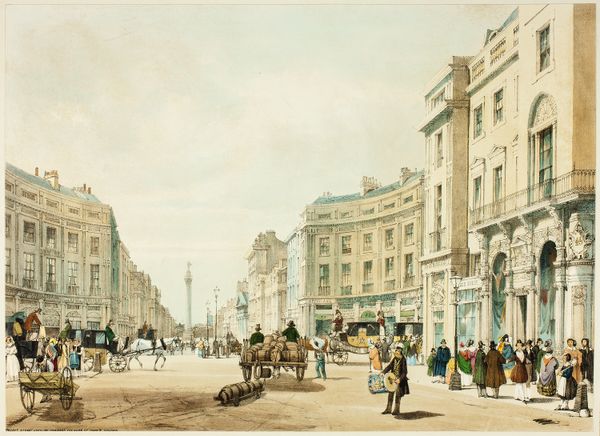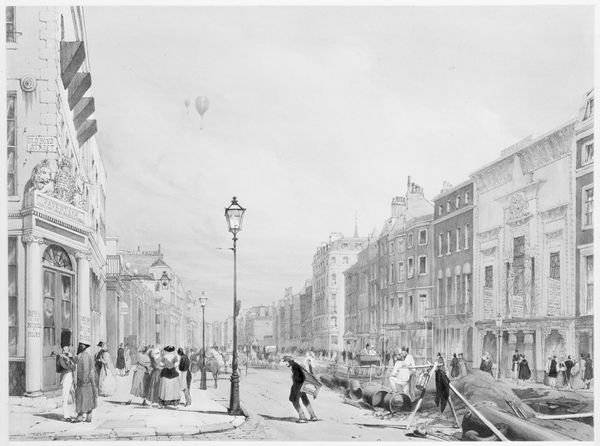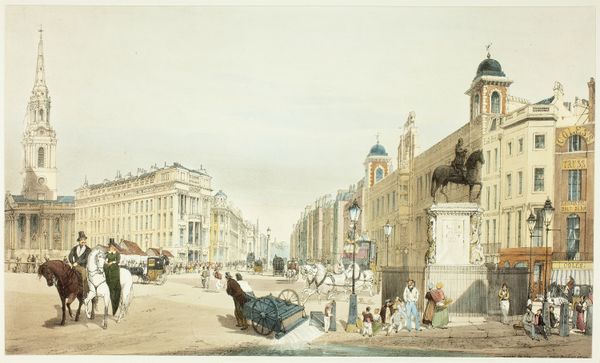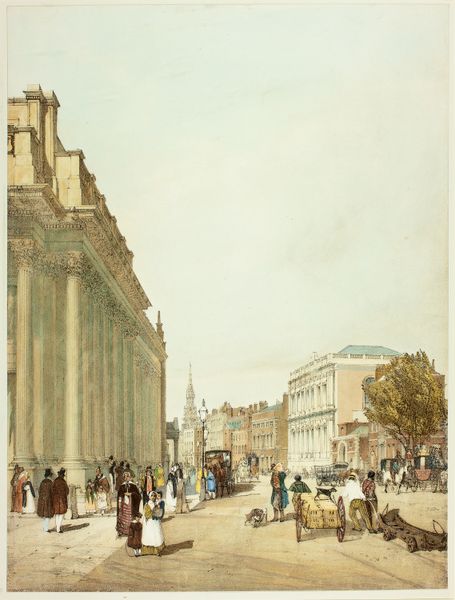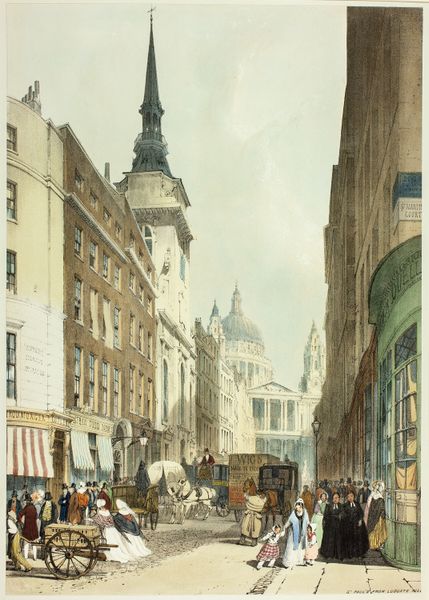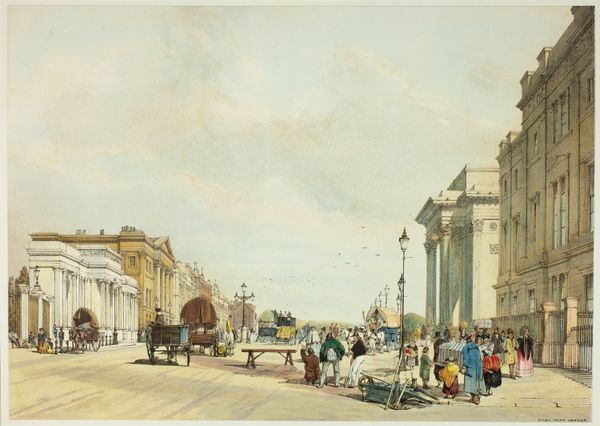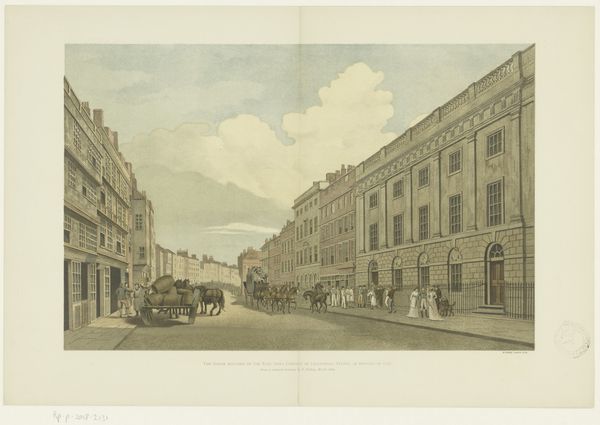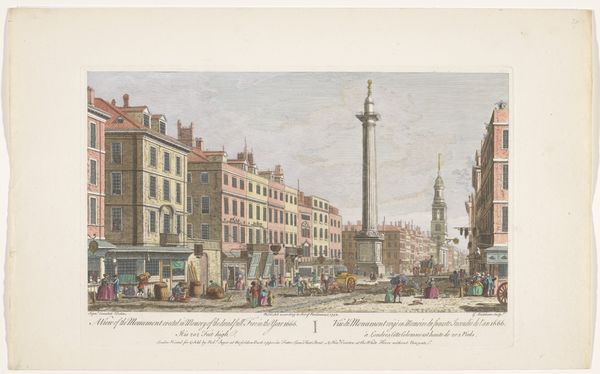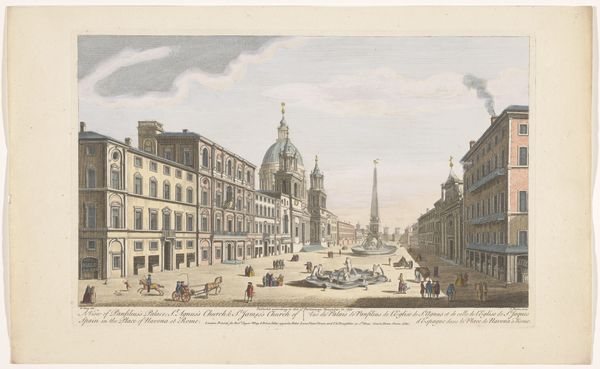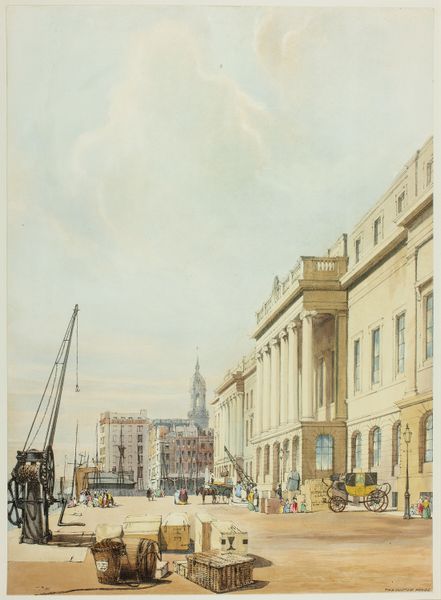
Piccadilly, Looking Towards the City, plate seventeen from Original Views of London as It Is 1842
0:00
0:00
drawing, lithograph, print, paper
#
drawing
#
lithograph
# print
#
perspective
#
paper
#
romanticism
#
cityscape
#
genre-painting
Dimensions: 317 × 429 mm
Copyright: Public Domain
Editor: This is "Piccadilly, Looking Towards the City," a lithograph print from 1842 by Thomas Shotter Boys, housed at the Art Institute of Chicago. The scene feels surprisingly bustling for an old print. What's your take on this cityscape? Curator: It's fascinating how Boys uses lithography here to capture not just the grand architecture, but also the grit of 19th-century London. Look at the open sewer depicted on the street, exposing the infrastructure beneath. Consider how that intersects with the fashionable individuals strolling by. What does it say about class and labour at that moment? Editor: It's easy to overlook the sewers, but now that you mention it, they stand out, contrasting with the elegantly dressed figures. Does the choice of lithography – a relatively new and accessible medium then – affect the message? Curator: Precisely! Lithography allowed for mass production, making images like these available to a wider audience, which also meant an expanded visual field, to those who weren’t exposed to “high” art before. Now, what labor went into creating such a large-scale print? Where do we see the hand of the artist, and where do we see the influence of the printing process itself? Is Boys interested in an artistic style that rejects industrial creation? Editor: That’s interesting. You can see a concern to record city infrastructure, but at the same time this is being mass-produced via industrial labor and new technologies! I'll certainly be thinking about that contrast going forward. Thanks! Curator: Indeed! It reveals how the consumption of art itself was deeply embedded in the city’s economic and material conditions. A good point to consider.
Comments
No comments
Be the first to comment and join the conversation on the ultimate creative platform.
